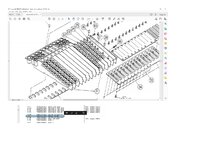altruistica
Member
I recently picked up a Tascam 688. It was advertised as parts only. I had one in the past and wanted to try one again. Anyhow, after fitting a new belt to the unit courtesy of a great video on Youtube, I've discovered there is a problem with the metering /switching on Track 3. The unit records and playbacks, but it has a problem switching the signal. I read an old post by 'wkrbee' who said:
'Just a FYI.The 4066 ICs are running at their Max.recommended voltage.The better replacement is the 4966 which has a higher Max recommended voltage.The meters peaking and dropping back on power up is a clear sign you have DC on the audio path-which is typically the failure mode of the 4066-the control voltage shorts to the I/O.'
Now I don't know if that problem is the same one I've got, but I made a short video here to demonstrate it.
Any help offered, gratefully received. Thanks, Al
'Just a FYI.The 4066 ICs are running at their Max.recommended voltage.The better replacement is the 4966 which has a higher Max recommended voltage.The meters peaking and dropping back on power up is a clear sign you have DC on the audio path-which is typically the failure mode of the 4066-the control voltage shorts to the I/O.'
Now I don't know if that problem is the same one I've got, but I made a short video here to demonstrate it.
Any help offered, gratefully received. Thanks, Al


